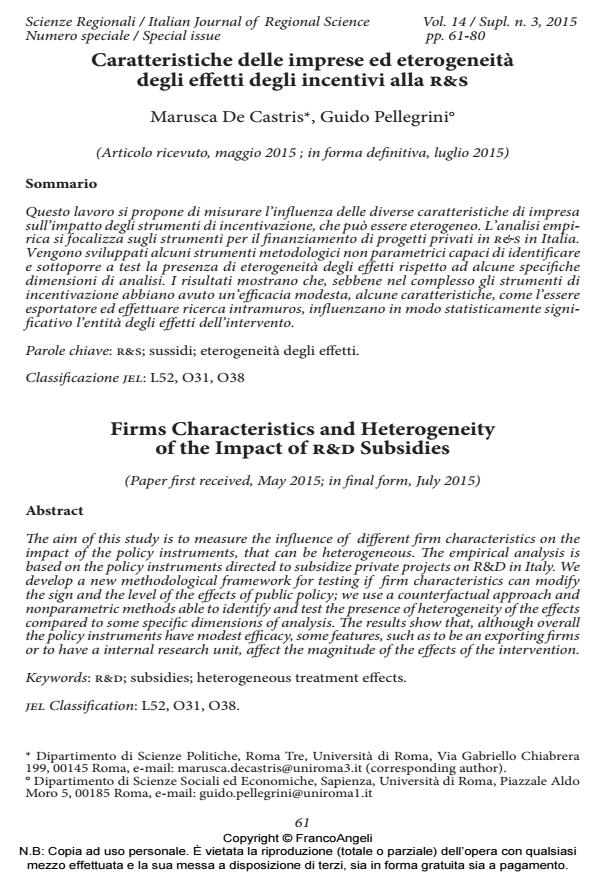Characteristics and Heterogeneity of the Impact of r&d Subsidies
Journal title SCIENZE REGIONALI
Author/s Marusca De Castris, Guido Pellegrini
Publishing Year 2015 Issue 2015/3 Suppl.
Language Italian Pages 19 P. 61-79 File size 193 KB
DOI 10.3280/SCRE2015-S03004
DOI is like a bar code for intellectual property: to have more infomation
click here
Below, you can see the article first page
If you want to buy this article in PDF format, you can do it, following the instructions to buy download credits

FrancoAngeli is member of Publishers International Linking Association, Inc (PILA), a not-for-profit association which run the CrossRef service enabling links to and from online scholarly content.
The aim of this study is to measure the influence of different firm characteristics on the impact of the policy instruments, that can be heterogeneous. The empirical analysis is based on the policy instruments directed to subsidize private projects on R&D in Italy. We develop a new methodological framework for testing if firm characteristics can modify the sign and the level of the effects of public policy; we use a counterfactual approach and nonparametric methods able to identify and test the presence of heterogeneity of the effects compared to some specific dimensions of analysis. The results show that, although overall the policy instruments have modest efficacy, some features, such as to be an exporting firms or to have a internal research unit, affect the magnitude of the effects of the intervention.
Keywords: R&d; subsidies; heterogeneous treatment effects
Jel codes: L52, O31, O38
Marusca De Castris, Guido Pellegrini, Caratteristiche delle imprese ed eterogeneità degli effetti degli incentivi alla r&s in "SCIENZE REGIONALI " 3 Suppl./2015, pp 61-79, DOI: 10.3280/SCRE2015-S03004